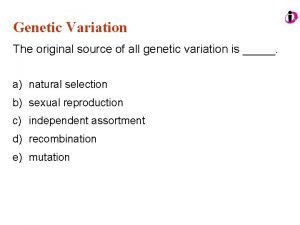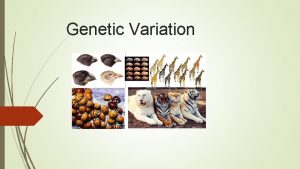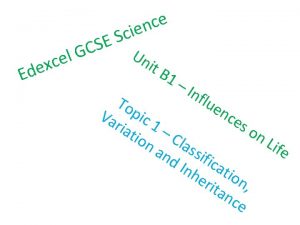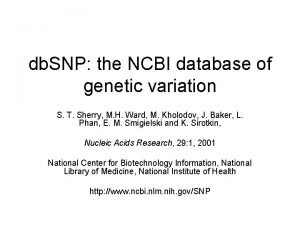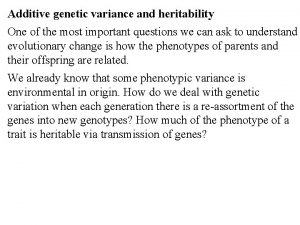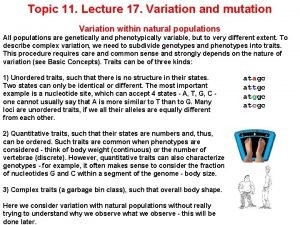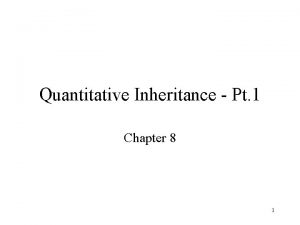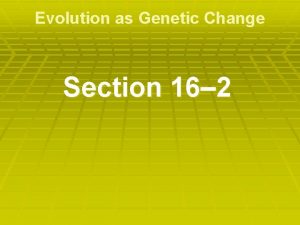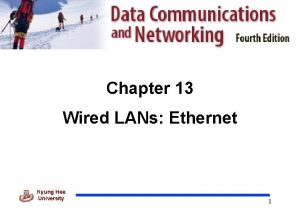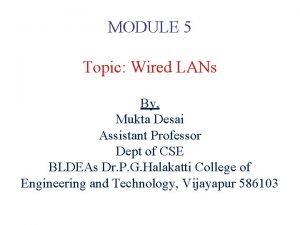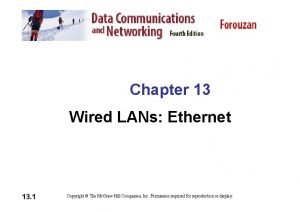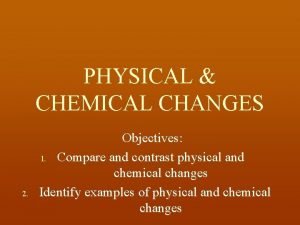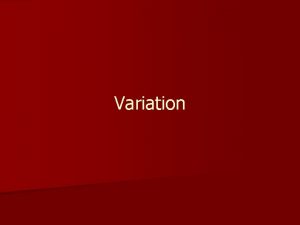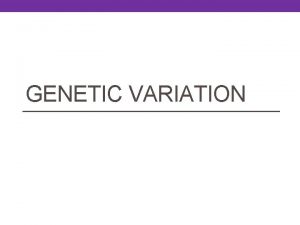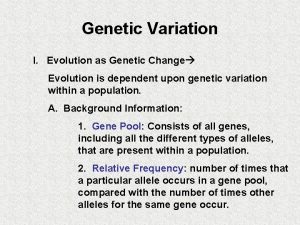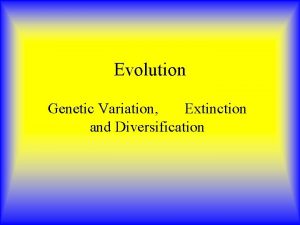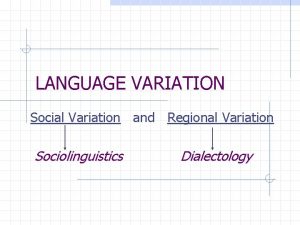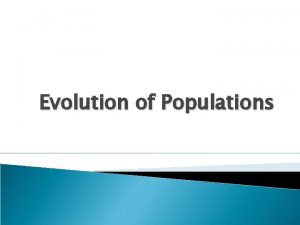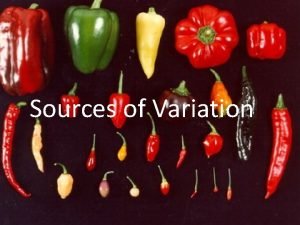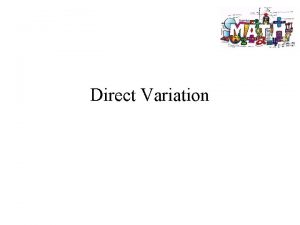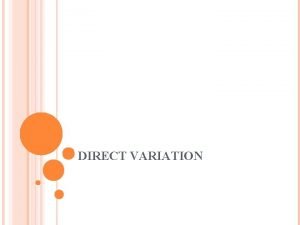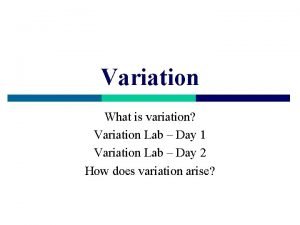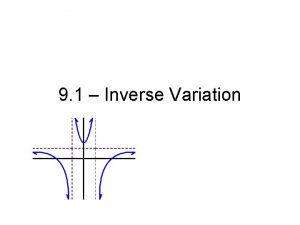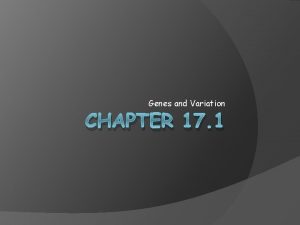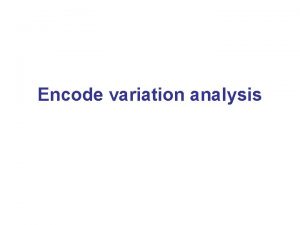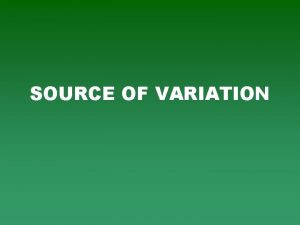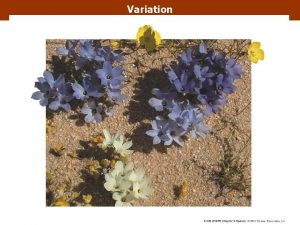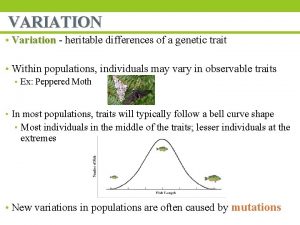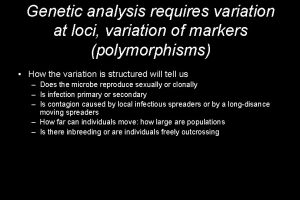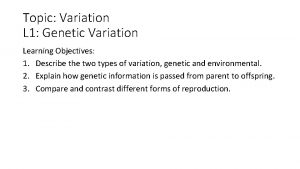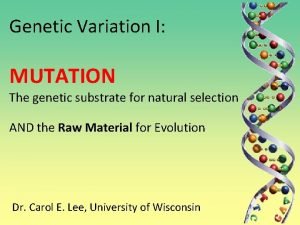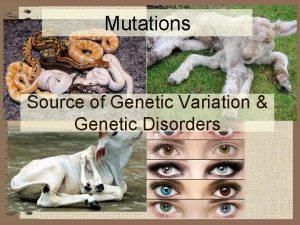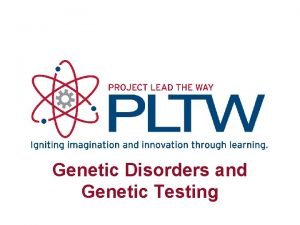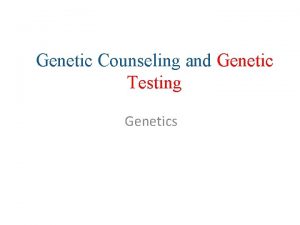Evolution Genetic Variation and Evolution Evolution changes through































- Slides: 31

Evolution

Genetic Variation and Evolution • Evolution: changes through time 1. Species accumulate difference 2. Descendants differ from their ancestors 3. New species arise from existing ones • Individuals don’t evolve – populations do

A brief history of evolution Charles Darwin was born on February 12, 1809 in Shrewsbury, England. From 1831 to 1836 Darwin served as naturalist aboard the H. M. S. Beagle on a British science expedition around the world. He observed much variation in related or similar species of plants and animals that were geographically isolated from each other. These observations were the basis for his ideas.

http: //evolution. berkeley. edu/evolibrary/home. php www. darwinday. org/english. L/life/beagle. html http: //evolution. berkeley. edu/evolibrary/home. php Life Sciences-HHMI Outreach. Copyright 2006 President and Fellows of Harvard College.

A brief history of evolution Darwin presumed that populations of individuals changed over time, and, in 1844, he developed the concept of the driving force for evolution. It wasn’t until many years later that he published his idea. “I have called this principle, by which each slight variation, if useful, is preserved, by the term Natural Selection. ” —Charles Darwin from "The Origin of Species“, 1859

EVIDENCE OF EVOLUTION • STRUCTURAL ADAPTATIONS – MIMICRY – CAMOUFLAGE – MILLIONS OF YEARS http: //evolution. berkeley. edu/evolibrary/home. php http: //science. howstuffworks. com/animal-camouflage 2. htm Life Sciences-HHMI Outreach. Copyright 2006 President and Fellows of Harvard College.

EVIDENCE OF EVOLUTION • STRUCTURAL ADAPTATIONS – MIMICRY – CAMOUFLAGE – MILLIONS OF YEARS • PHYSIOLOGICAL ADAPTATIONS – CHANGE IN A METABOLIC PROCESS – WHAT DO YOU HEAR ABOUT IN THE NEWS ABOUT SOME BACTERIA? Life Sciences-HHMI Outreach. Copyright 2006 President and Fellows of Harvard College.

http: //evolution. berkeley. edu/evolibrary/home. php Life Sciences-HHMI Outreach. Copyright 2006 President and Fellows of Harvard College.

OTHER EVIDENCE OF EVOLUTION • FOSSILS • ANATOMY – HOMOLOGOUS STRUCTURES - similar structures that evolved from a common ancestor. http: //evolution. berkeley. edu/evolibrary/home. php Life Sciences-HHMI Outreach. Copyright 2006 President and Fellows of Harvard College.

OTHER EVIDENCE OF EVOLUTION • FOSSILS • ANATOMY – HOMOLOGOUS STRUCTURES – ANALOGOUS STRUCTURES - various structures in different species having the same appearance, structure or function but have evolved separately, thus do not share common ancestor http: //evolution. berkeley. edu/evolibrary/home. php Life Sciences-HHMI Outreach. Copyright 2006 President and Fellows of Harvard College.

OTHER EVIDENCE OF EVOLUTION • FOSSILS • ANATOMY – HOMOLOGOUS STRUCTURES – ANALOGOUS STRUCTURES – VESTIGIAL STRUCTURE - structures or attributes that have apparently lost most or all of their ancestral function in a given species, but have been retained – EMBRYOS http: //evolution. berkeley. edu/evolibrary/home. php Life Sciences-HHMI Outreach. Copyright 2006 President and Fellows of Harvard College.

MECHANISMS FOR EVOLUTION • HOW CAN THE GENE POOL CHANGE? – MUTATION - permanent alteration of the nucleotide sequence of the genome – GENETIC DRIFT - the change in the frequency of an allele in a population due to random sampling of organisms – GENE FLOW - the transfer of alleles or genes from one population to another – NONRAMDOM MATING - mating that has not occurred due to chance – SELECTION - survival and reproduction or elimination of individuals with certain genotypes (genetic compositions), by means of natural or artificial controlling factors. – WOULD THESE THINGS EFFECT A LARGE POPULATION OR A SMALL POPULATION MORE?

ALL IMAGES: http: //evolution. berkeley. edu/evolibrary/home. php Life Sciences-HHMI Outreach. Copyright 2006 President and Fellows of Harvard College.

Five agents of evolutionary change The Hardy-Weinberg Principle - genetic equilibrium

Genetic equilibrium is a basic principle of population genetics. Hardy–Weinberg principle states that the genotype frequencies in a population remain constant or are in equilibrium from generation to generation unless specific disturbing influences are introduced. Those disturbing influences include: 1. 2. 3. 4. 5. non-random mating new mutations selection random genetic drift gene flow

Evolution of species • Based on 3 mechanisms – 1. Sources of variation – 2. Method of selection for those characteristics that would be passed on – 3. A mechanism for retaining changes

1. Sources of variation • Genetic diversity thru mutations that are not lethal – Physical or behavioral traits • Sexual reproduction between genetically different individuals

1. Sources of variation

2. Method of selection • Reproductive fitness is the method of selection. – Competition, escaping from and eluding predators – Finding a good mate

Selection • Natural selection: environmental conditions determine which individuals in a population produce the most offspring • 3 conditions for natural selection to occur – Variation must exist among individuals in a population – Variation among individuals must result in differences in the number of offspring surviving – Variation must be genetically inherited

Natural selection: mechanism of evolutionary change • • Natural selection: proposed by Darwin as the mechanism of evolution individuals have specific inherited characteristics they produce more surviving offspring the population includes more individuals with these specific characteristics the population evolves and is better adapted to its present environment

Natural Selection Darwin knew nothing of genes, but what he did have were two observations and a little inference that provided the motive force for evolution. • Darwin: Evolution is descent with modification

Natural Selection Observation 1: Organisms generally have more offspring than can survive to adulthood. Observation 2: Offspring are not identical. There is variation in their appearance, size, and other characteristics.

Natural Selection Inference: Those organisms that are better adapted to their environment have a greater likelihood of surviving to adulthood and passing these characteristics on to their offspring. Survival of the “fittest. ”

Survival of the “fittest. ” Darwin’s theory for how long necks evolved in giraffes

Selection • Artificial selection: a breeder selects for desired characteristics

3. Maintenance of Variation • Frequency-dependent selection: depends on how frequently or infrequently a phenotype occurs in a population – Negative frequency-dependent selection: rare phenotypes are favored by selection – Positive frequency-dependent selection: common phenotypes are favored; variation is eliminated from the population • Strength of selection changes through time

Negative Frequency-Dependent Selection Sideblotched Lizards Infectious Diseases

Positive Frequency-Dependent Selection Mimicry

WHAT IS SPECIATION? • GEOGRAPHIC ISOLATION • REPRODUCTIVE ISOLATION http: //evolution. berkeley. edu/evolibrary/home. php Life Sciences-HHMI Outreach. Copyright 2006 President and Fellows of Harvard College.

Fitness and Its Measurement • Fitness: A phenotype with greater fitness usually increases in frequency – Most fit is given a value of 1 • Fitness is a combination of: – Survival: how long does an organism live – Mating success: how often it mates – Number of offspring per mating that survive
 Meiosis and genetic variation answer key
Meiosis and genetic variation answer key Gene pool
Gene pool Genetic programming vs genetic algorithm
Genetic programming vs genetic algorithm Genetic programming vs genetic algorithm
Genetic programming vs genetic algorithm Genetic drift
Genetic drift Gene flow vs genetic drift
Gene flow vs genetic drift The original source of all genetic variation is _____
The original source of all genetic variation is _____ Genetic variation examples
Genetic variation examples Ien toul
Ien toul Db direct snp
Db direct snp Additive genetic variance
Additive genetic variance Genetic variation
Genetic variation Components of genetic variance
Components of genetic variance Which graph represents a function with direct variation
Which graph represents a function with direct variation Inverse eq
Inverse eq Correlation and regression
Correlation and regression Changes in latitudes, changes in attitudes meaning
Changes in latitudes, changes in attitudes meaning Chemical change meaning
Chemical change meaning Stabilizing selection human birth weight
Stabilizing selection human birth weight Evolution of populations section 16-1 genes and variation
Evolution of populations section 16-1 genes and variation 16-2 evolution as genetic change
16-2 evolution as genetic change Tangential sawing of timber
Tangential sawing of timber Through one man sin entered the world, and through one man
Through one man sin entered the world, and through one man Classes of furcation
Classes of furcation Night of the scorpion introduction
Night of the scorpion introduction Lans
Lans Wired lans
Wired lans Mukta desai
Mukta desai First ethernet
First ethernet Compare and contrast physical and chemical changes
Compare and contrast physical and chemical changes Family of orientation
Family of orientation Marriages and families changes choices and constraints
Marriages and families changes choices and constraints






